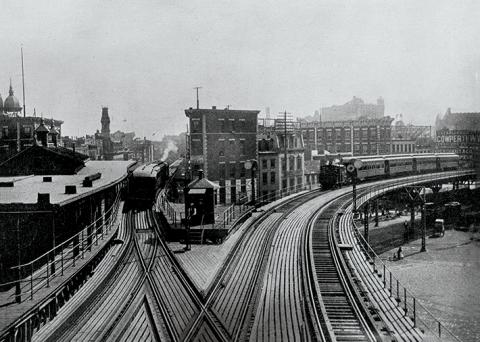
The Nonferrous Metals and Alloys Committee Celebrates 120 Years
2022 marks the 120th anniversary of one of ASTM International’s oldest committees: the committee on nonferrous metals and alloys (B02). Founded in 1902, the committee, like ASTM itself, has its roots in the railroad industry, which was booming at the dawn of the 20th century. The world is a much different place now than it was in 1902, but throughout the decades, B02 has proven to be a reliable source of standards, responding to ever-changing industry needs.
The official scope of the committee notes that it is dedicated to “the development and maintenance of standards on composition, properties, dimensions, text methods, classifications, and terminology of nonferrous metals and alloys, of solder and solder fluxes and materials used in the manufacture of electrical heating devices, electrical resistance devices, electrical contact and conductors, and thermosensitive elements in thermostats.”
“The committee now covers a diverse range of industries within the metal world,” says Eric Boes, chair of B02 (active member since 2003). “Our largest subcommittee, B02.07, covers nickel and nickel alloys, including wrought products, such as tubing for high-performance heat-exchange applications.”
In addition to B02.07, B02 is comprised of the following subcommittees:
- B02.02 – lead and tin, metals used heavily in the automotive industry and for soldering purposes;
- B02.04 – zinc and cadmium;
- B02.05 – precious metals and electrical contact materials;
- B02.10 – thermostat metals and electrical resistance heating materials; and
- B02.11 – electrical contact test methods.
The committee’s earliest standard — one of ASTM’s most important initial standards — is the specification for zinc (B6). This standard has its roots in an undesignated standard, the specification for spelter, dating back to 1911. Spelter is a mostly forgotten term at this point, but it refers to zinc cast in slabs for commercial use or crude zinc obtained in smelting zinc ores. While B6 is considered a “legacy standard” today, it is still revised as warranted by changes in the industry.
In addition to its standards, the committee on nonferrous metals and alloys made a major contribution to the voluntary consensus standards process with its initiation of the Unified Numbering System (UNS) for metals and alloys. This led to a decade-long effort to develop a new method for identifying alloys, ultimately resulting in the 1974 publication of the Society of Automotive Engineers/ASTM Practice for Numbering Metals and Alloys.
In a February 2002 article in Standardization News, ASTM Award of Merit winner Richard Lynch, Ph.D., then the honorary chair of B02, provided an extensive history of the committee. In his introduction, Lynch points out that “B02 is a committee that serves a mature industry with limited growth and scarce resources, yet its members continue to find new areas where standardization is critical to their industry and its future success.”
Ultimately, Lynch credits the committee members for its continued success.
“B02 has been extremely fortunate to benefit from strong leadership over the years in the form of main committee officers, members-at-large, subcommittee officers, and those who have been leaders and technical experts within subcommittees and task groups,” wrote Lynch.
In considering the future of the committee, current chair Boes echoes Lynch’s words, saying ,“The depth and breadth of the many nonferrous metals and alloys, and related product standards that are under B02’s jurisdiction, provide a basis for much growth and development in the diverse industries that use these materials and standards. Products that originated with the dawn of the industrial age have become building blocks worldwide for applications spanning corrosion protecting zinc-galvanizing and nickel-based alloys for high-performance industrial products, solder materials, and refined precious metals that drive electronics and electrical connectors.”
On behalf of the committee, we look forward to meeting and greeting you in 2022:
Seattle, Washington (May 17–19)
New Orleans, Louisiana (October 31–November 2)
The committee values your presence and voice in developing and delivering voluntary consensus standards. Every opinion, experience, question, and concern vocalized at meetings is valued for improving product quality, enhancing health and safety, strengthening market access and trade, and building consumer confidence. The committee welcomes and encourages participation from around the world to increase new standards development, professional development, collaboration, and education that helps meet your needs and respond to ever-changing industry needs. ■
 SN Home
SN Home Archive
Archive Advertisers
Advertisers Masthead
Masthead RateCard
RateCard Subscribe
Subscribe Email Editor
Email Editor